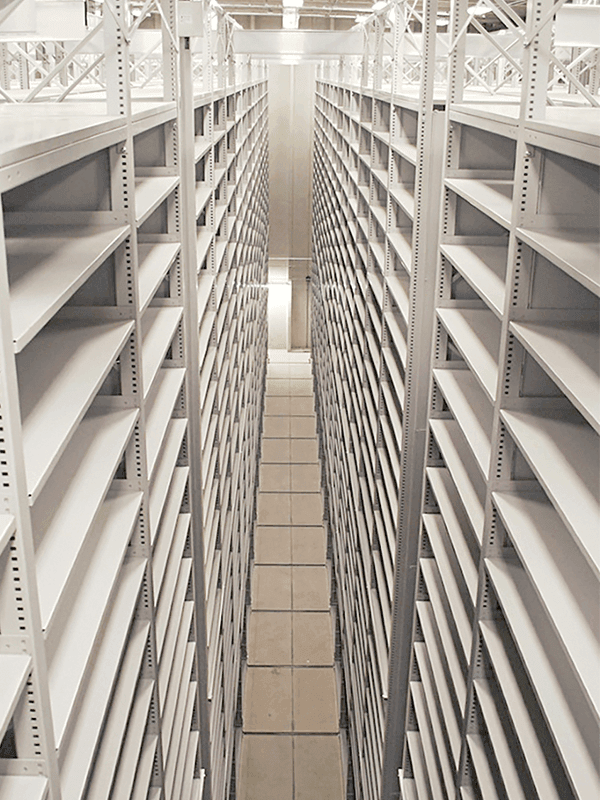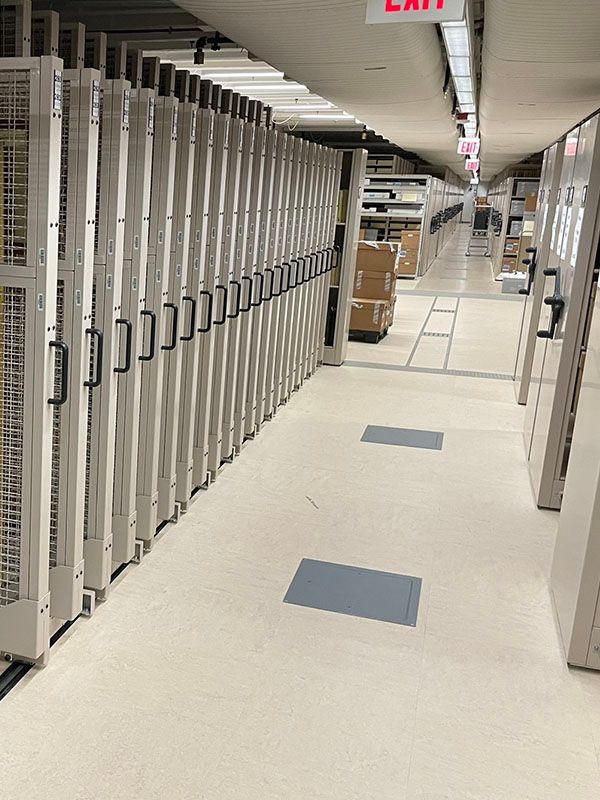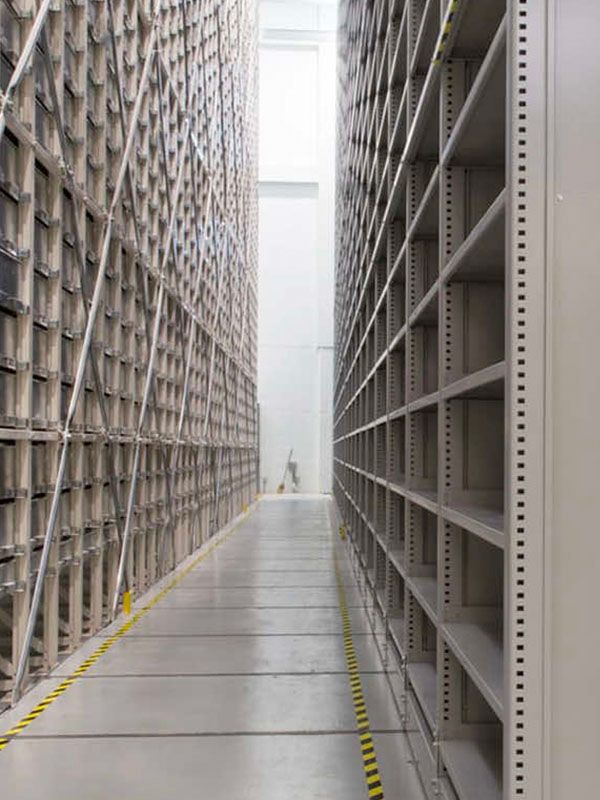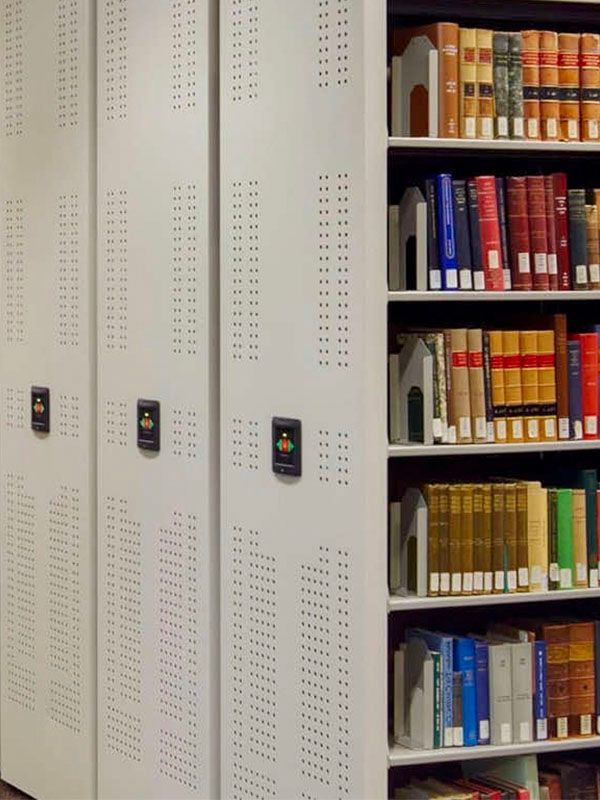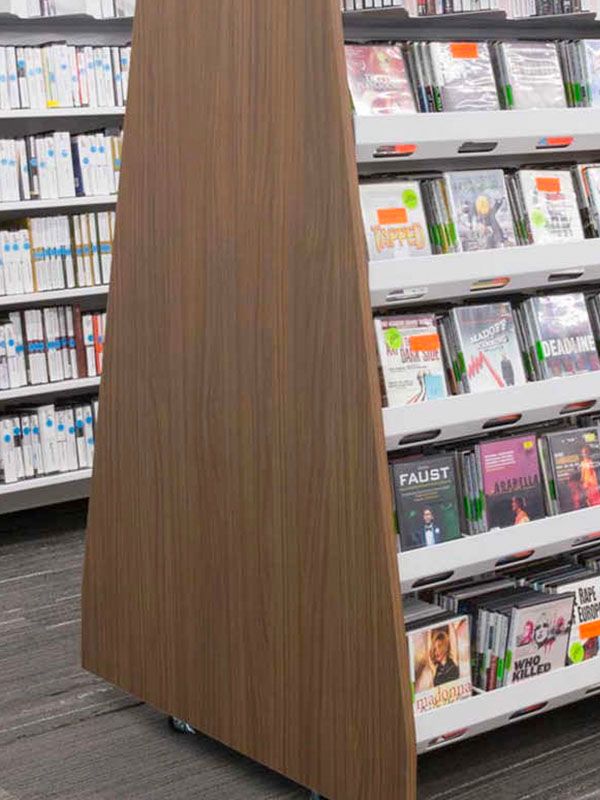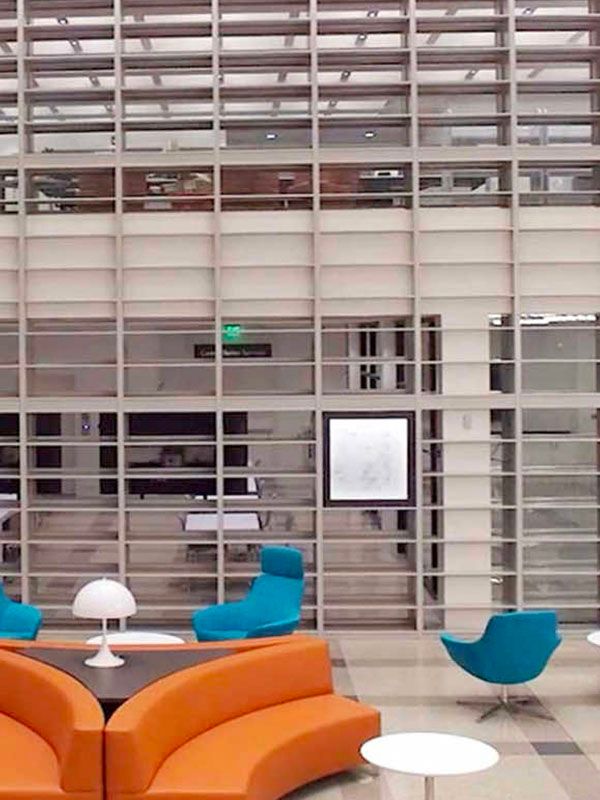Calgary, Alberta, Canada
Putting the Higher in Higher Education
The University of Calgary demonstrates an emerging model of high-bay library design.
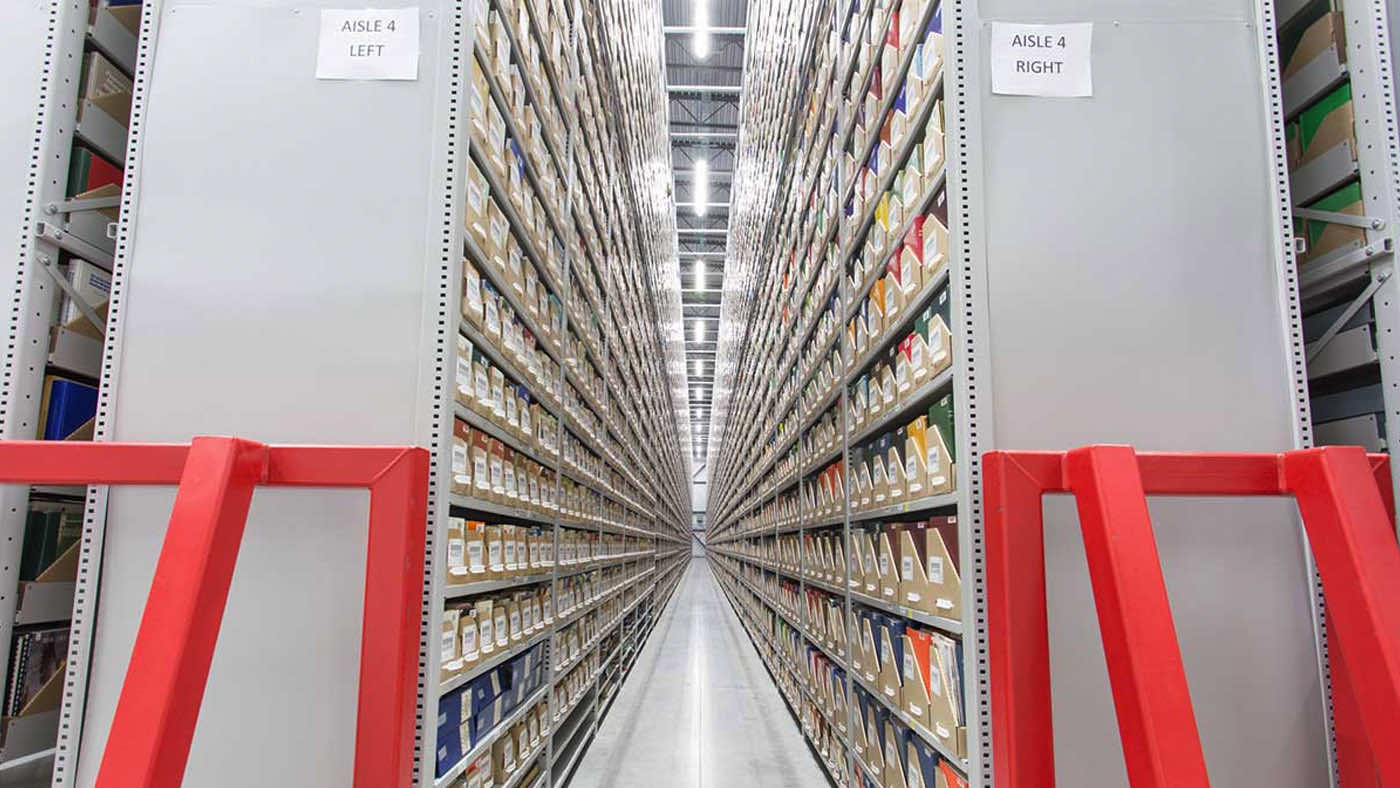
High-bay library shelving facilities can seem more like warehouses than academic institutions. Typically windowless to minimize stored materials’ exposure to harmful UV rays, these buildings feature rows of books that can extend up to five stories tall.
While these features are necessary to store and maintain millions of volumes in the best possible preservation environment, a new model is emerging. Offering spacious reading rooms for visiting researchers and pleasant work areas for archivists, conservators, and other staff, modern high-bay facilities are being designed to welcome visitors and encourage more interaction with the university campuses they serve.
The University of Calgary has embraced this new model by expanding its off-site library shelving facility to better integrate with on-campus services. The new building features Spacesaver’s High-Bay Shelving in large, climate-controlled storage areas, along with staff work areas, comfortable reading rooms for visitors, and multi-purpose rooms to host training events and field trips.
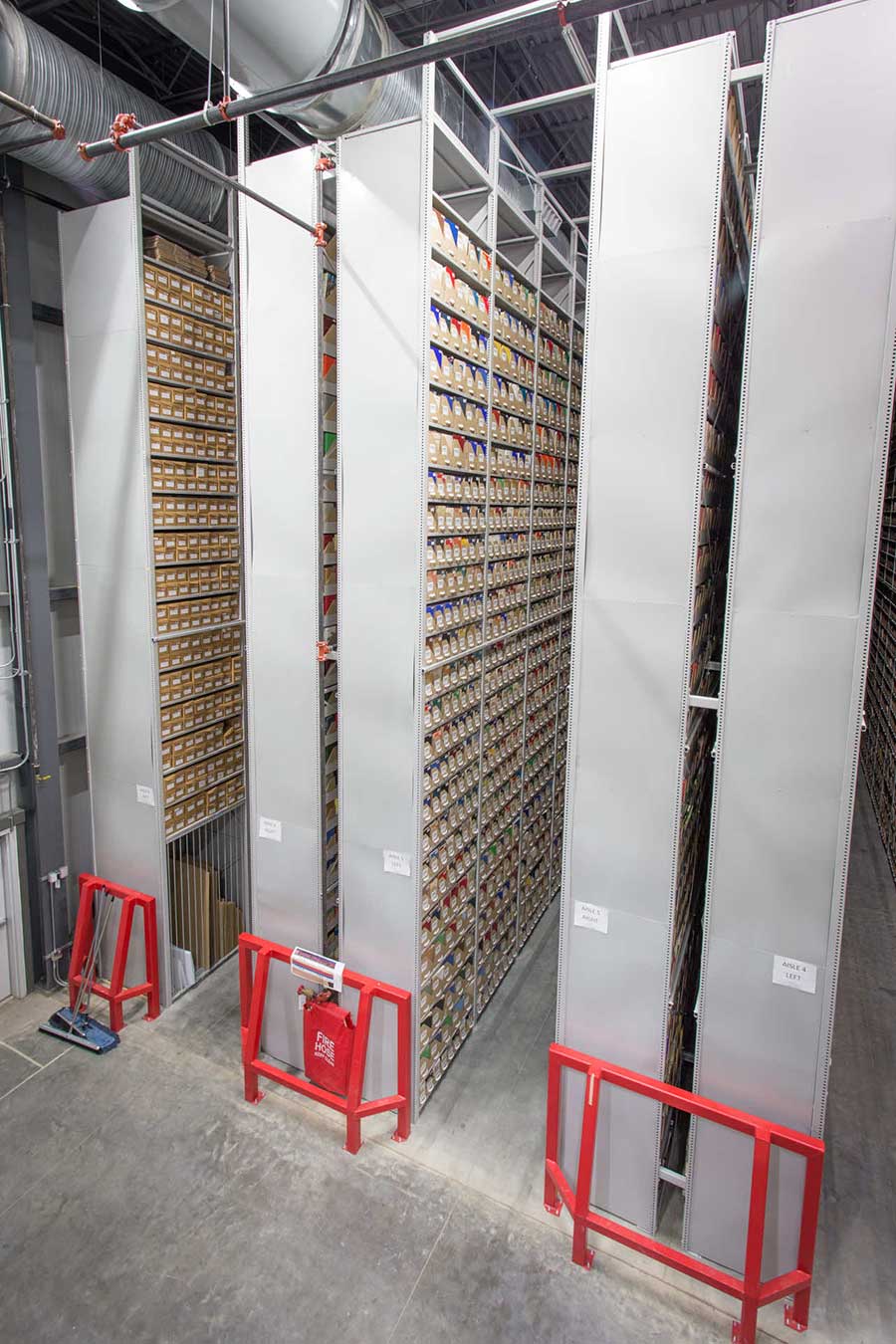
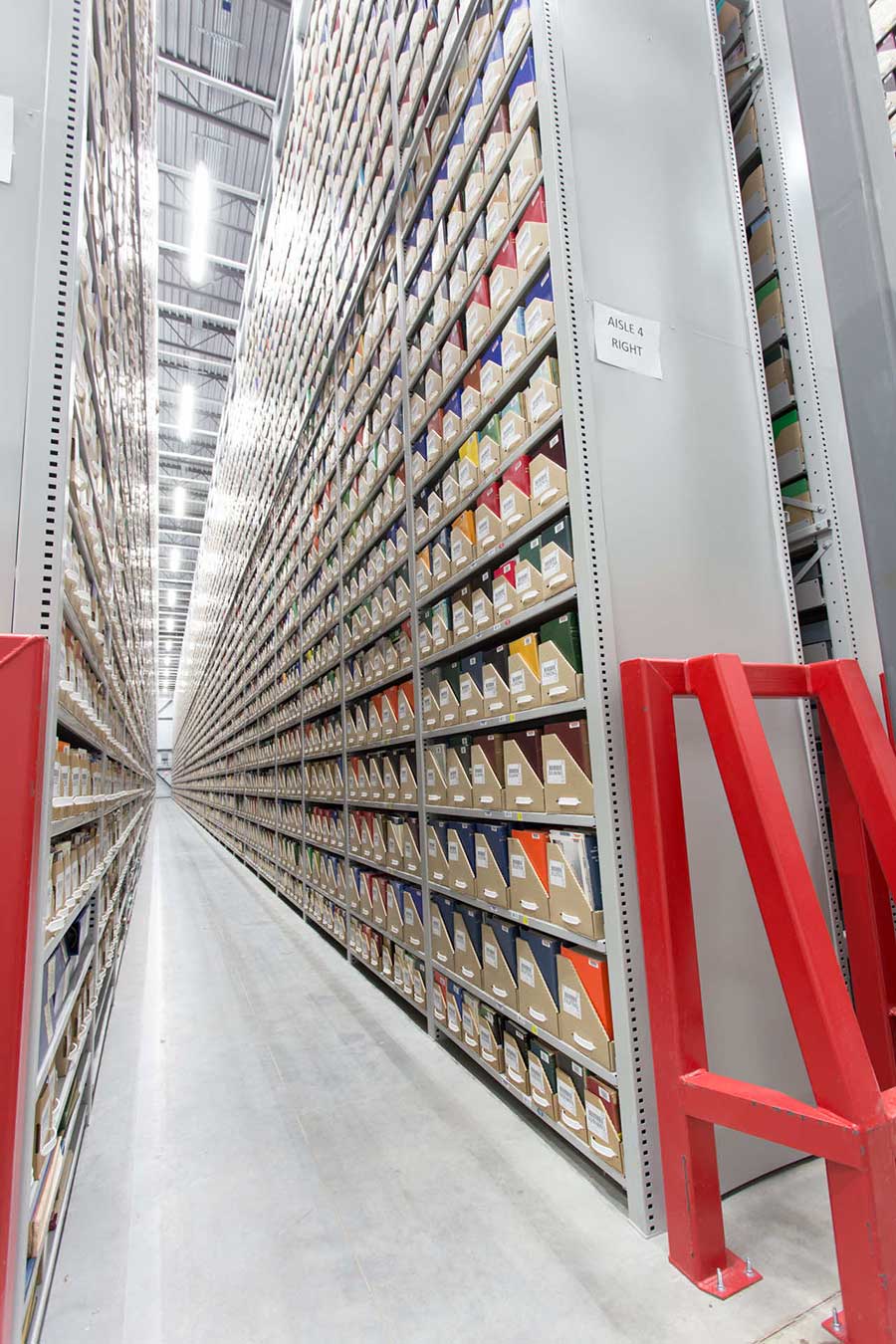
Download the Whole Story
Do you need more space on campus? See how the University of Calgary expanded its off-site library shelving facility to better integrate with on-campus services.
Download the Whole Story
Do you need more space on campus? See how the University of Calgary expanded its off-site library shelving facility to better integrate with on-campus services.

The Original Off-Site Shelving Facility Model
The University of Calgary built its original off-site library shelving facility in the late 2000s on a university-owned parcel on the outskirts of the city. The building was designed in conjunction with the new central library on campus, so it also includes Spacesaver art racks and shelving for artwork storage as pieces are rotated in and out of display in the library’s gallery.
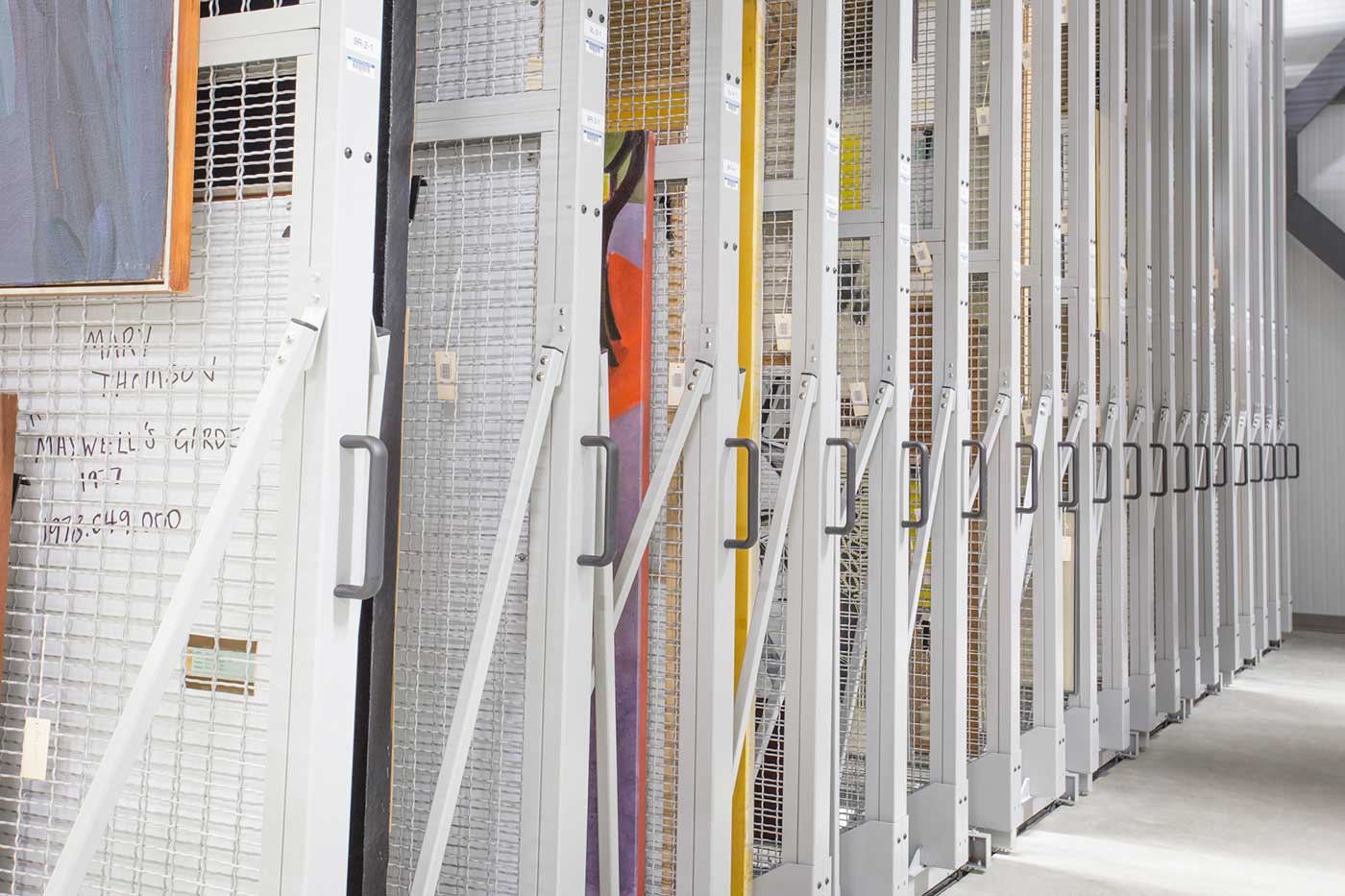
"We tied the design and construction of our high-density storage facility to the development and construction of our new library on campus."
- Claudette Cloutier, University of Calgary, Associate University Librarian for Research and Learning Services
The decision to build the original off-site facility was controversial at first, according to Tom Hickerson, Vice Provost for Libraries and Cultural Resources. He was hired to oversee the design of the central library in tandem with the university’s high-bay shelving facility. After seeing the success of Cornell University’s high-bay shelving facilities firsthand, he and other campus leaders were committed to the principle. “We decided early on that we would never see the storage of print materials drive users out of the library,” he said.
At the same time, the project planners were sensitive to librarians’ concerns that browsing functionality should be preserved. “Having good metadata is more critical than spatial proximity,” Hickerson said. “We devoted more resources to bibliographical access at the same time as we were advocating a move off campus.”

Building On A Good Idea
When the time came to consider expanding the facility, the University of Calgary arrived at a new approach. The institution continues to acquire paper-based materials, so proper storage of these materials is still a priority. However, the design team also wanted to push beyond the concept of a typical off-site “warehouse” model to consolidate vital services and better integrate with campus services.

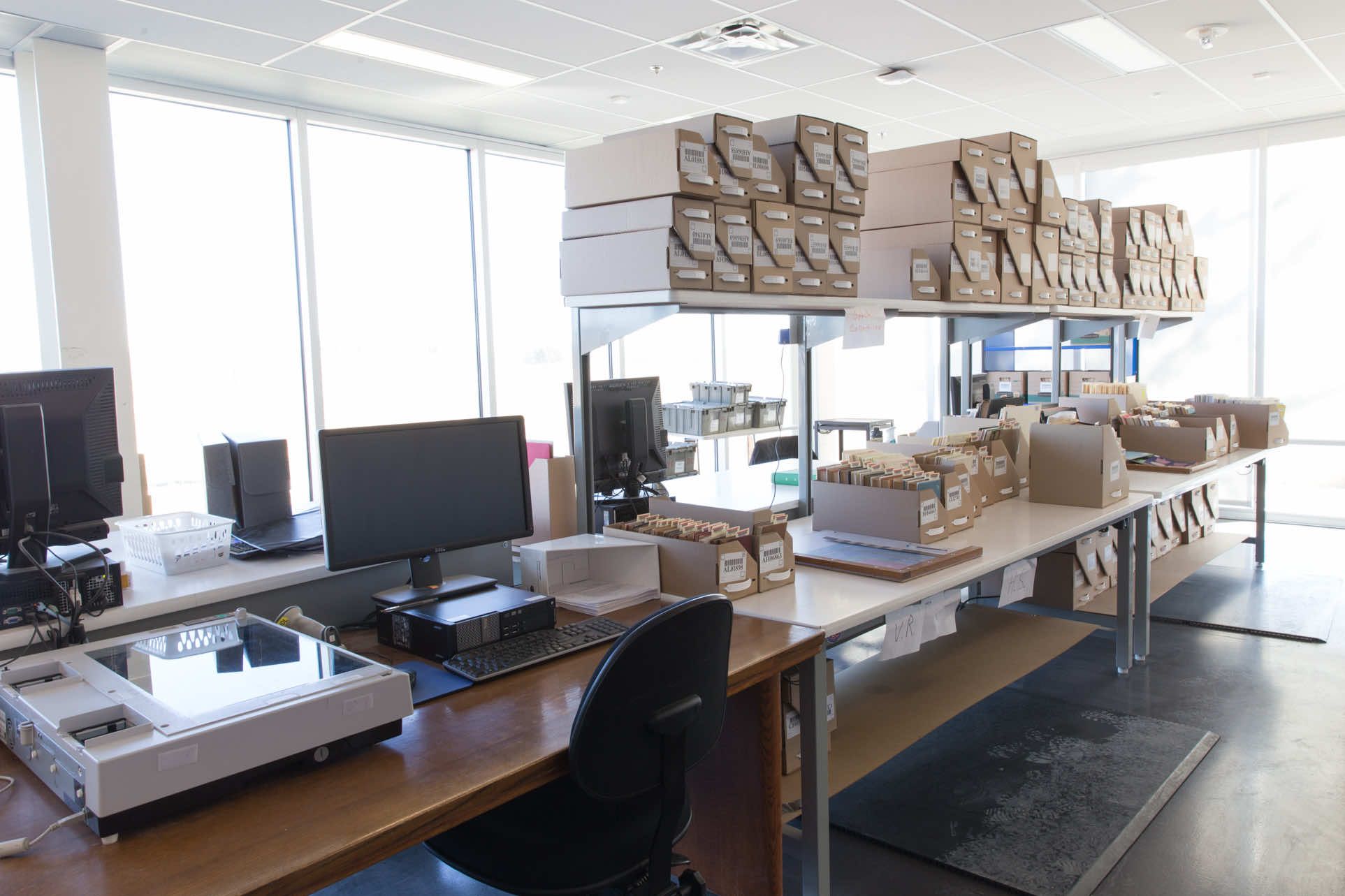
To achieve these goals, the University of Calgary added two additions to its original high-bay facility in 2017-2018. One includes Spacesaver XTend® Mobile High-Bay Storage Systems to keep materials organized and protected, and the other features office space, work areas, and an expanded reading room.
Deciding To Go Mobile
The University of Calgary’s original high-bay facility was fitted with Spacesaver’s static High-Bay Shelving. The planning team decided to use XTend® Mobile High-Bay Storage for the new addition, which allows the facility to not only take full advantage of the building’s vertical height but also eliminate wasted aisle space.
The university’s rapidly growing archives were a driving force behind the decision to install mobile high-bay shelving. “We didn’t anticipate how quickly some of those areas would grow,” said Claudette Cloutier, the University of Calgary’s Associate University Librarian for Research and Learning Services. “Our standard print materials have tapered off and for every volume that we purchase in a given year, we send a volume off-site. But our university records and archives collection is growing exponentially and we didn’t really account for that in the design and the development of the original facility. We’ve taken that into consideration for the addition, which is why we’ve moved to mobile shelving to increase our storage capacity.”
Why the University Chose XTend® Mobile:
- Parcel size (adding offices and other workspaces decreased the amount of square footage available for storing printed materials)
- Construction costs (larger envelope = higher cost)
- Ongoing operating costs (larger facility = higher costs)
- Need for future capacity
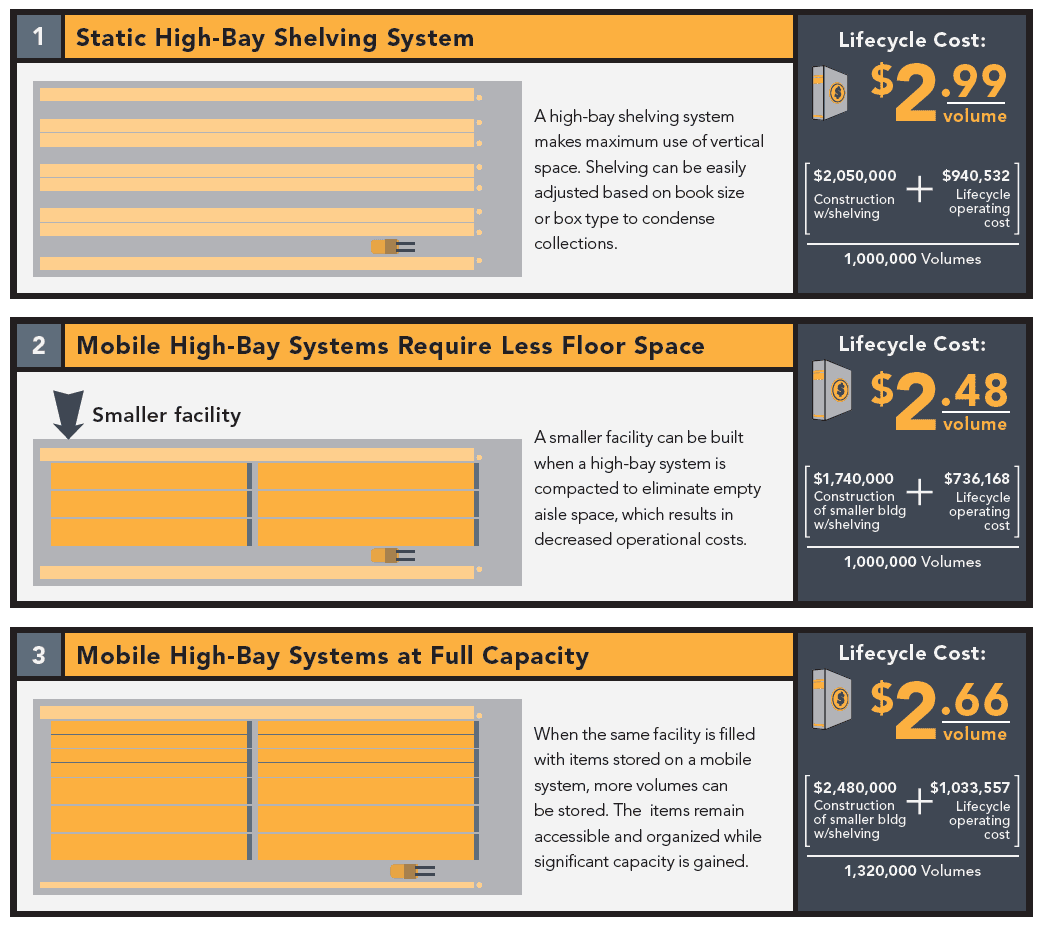
Download Our Complete Guide to Planning a High-Bay Facility
Planning a high-bay shelving facility is a complex task. Learn about considerations to account for early in the planning stages that will help ensure the most efficient construction and move-in processes.
Download Our Complete Guide to Planning a High-Bay Facility
Planning a high-bay shelving facility is a complex task. Learn about considerations to account for early in the planning stages that will help ensure the most efficient construction and move-in processes.

More Staff, More Workspace
While the original facility housed a staff of only five employees, around 30 staff will work at the expanded building. Along with training areas and other general-use spaces, the new addition has two large staffing areas. One area involves archival description and management — those vital metadata services that promote the collections’ accessibility — and the other area centers on the ingestion of physical materials and the preservation of cultural resources. These new areas allow staff who had been located in various areas around campus to be consolidated in one building. “Anything that comes in to us in a physical format will come to the high-density library first,” Cloutier said. “It won’t come to our collections unit on campus anymore. So, a lot of the folks who do the cataloging, the description, a lot of the metadata work — they will work out there.”
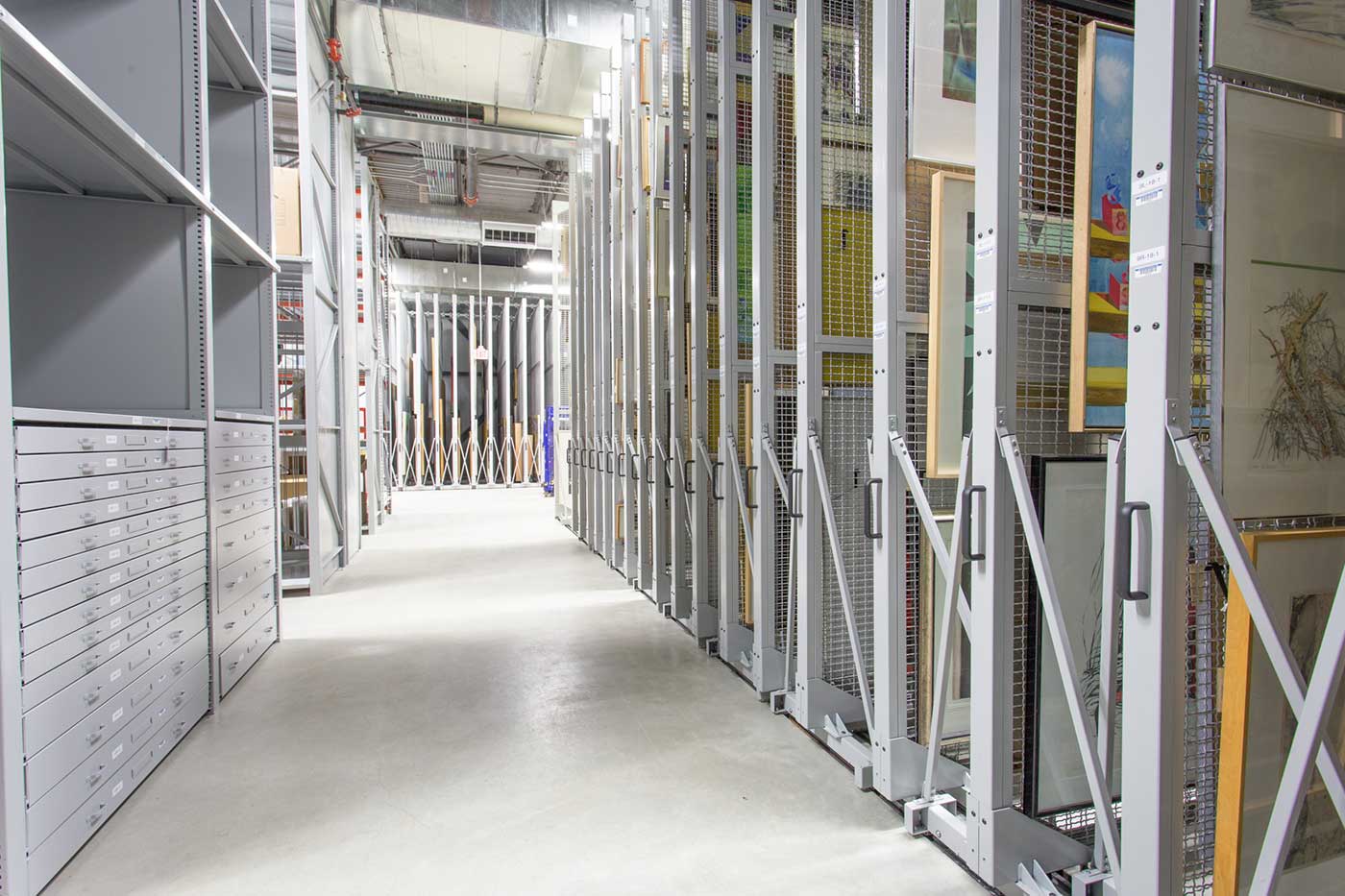
Because of these increased staffing levels, the facility design team wanted to create a welcoming workplace. The new workspaces were designed to promote openness and to take advantage of the site’s expansive mountain views. In the end, the expanded facility shows how a modern university can care for and share its collections in a way that best serves the academic community now and in the future.
Ready to learn more?
Spacesaver’s XTend® specialists can help with all aspects of planning and implementing a high-bay shelving system. Our in-house engineering and project management teams, paired with our network of local distributors, offer decades of experience and unparalleled expertise in high-bay library design.
